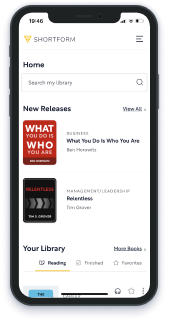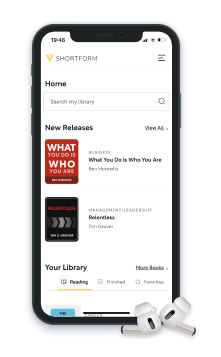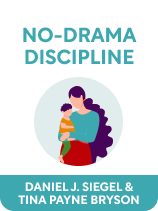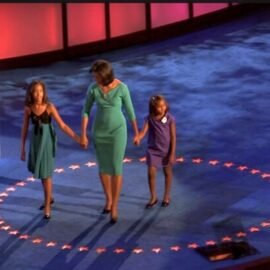

This article gives you a glimpse of what you can learn with Shortform. Shortform has the world’s best guides to 1000+ nonfiction books, plus other resources to help you accelerate your learning.
Want to learn faster and get smarter? Sign up for a free trial here .
Do you often lose patience with your child? How can you get your child to behave without resorting to harsh discipline methods, such as spanking and time-outs?
If you’re a typical parent, you want your children to succeed and live happily and harmoniously with others. However, many parents act contrary to these goals because they fall into autopilot mode—making decisions in the heat of the moment in an effort to make the child behave.
Here’s how practicing conscious parenting can help you get your child to behave without resorting to harsh disciplining techniques.
The Challenge of Parenting
Most parents have similar long-term goals for their children: They want them to be happy, independent, confident, and creative. But it’s easy to forget about these goals in the short term and shift your focus to whether or not the child is being “good” (doing what you want them to do) or “bad” (doing something else) at any given moment.
In an effort to get the child to behave, some parents resort to yelling and spanking. However, such methods aren’t effective because they rely on skills young children don’t have. For example, when parents spank, they assume the memory of that pain will deter their children from misbehaving in the future—that kids will stop and think about that painful memory before acting. However, that kind of impulse control is an upper brain skill that young kids haven’t learned yet, so the logic of spanking sets kids up for failure.
Furthermore, resorting to such harsh disciplining methods isn’t just damaging to the child, it’s unnecessary, especially for very young children. This is because children’s behavior can sometimes be less about emotions and goals and more about trying to understand the world around them. For example, it’s normal for toddlers to hit people or objects purely to see what the result will be, not because they feel upset or angry.
Conscious parenting is looking beyond the short-term goal of getting your child to behave by the most effective means. It involves thinking about how the disciplining techniques you use will affect your child in the future.
The Root of Child Misbehavior
The first step to learning conscious parenting is to understand the root of children’s misbehavior. According to Daniel J. Siegel and Tina Payne Bryson, most misbehavior problems can be attributed to children’s inability to self-regulate emotionally because their upper brain hasn’t developed enough yet. Therefore, young children are simply not capable of higher-level functions such as empathy, impulse control, emotional regulation, and critical thinking. Unlike the lower part of the brain, the upper part is not fully developed in children; in fact, the upper brain doesn’t completely mature until around age 25.
With this in mind, conscious parenting involves setting appropriate expectations for the child. For example, a four-year-old genuinely isn’t capable of sitting quietly in church for an hour without something to distract her—she hasn’t developed impulse control (an upper brain function) yet, which means her brain hasn’t yet learned to control her urges to talk, play, and move around. Her parents should set their expectations accordingly.
Mindful Discipline
In addition to considering brain development, conscious parenting involves approaching discipline in a mindful way, rather than simply reacting on instinct (or blowing up). In practice, mindful discipline means approaching each situation with curiosity. When your child misbehaves, Siegel and Bryson recommend asking yourself these three questions:
Why did my child do that? Usually, the answer has to do with emotions and goals. What emotion were they trying to express? What goal were they trying to accomplish?
What lesson do I want them to learn right now? This answer may vary depending on the answer to the first question. For example, if your child hit her brother because she was feeling jealous of him, you might want to teach her a healthier way to handle jealousy.
How should I deliver that lesson? This answer will also depend on the specifics of the situation. For example, if your daughter is two years old, she may be too young to really understand jealousy, so you may need to simplify how you deliver your lesson. On the other hand, older children can understand nuanced emotions, so you can talk with them about jealousy in more depth.
The Importance of Timing
Conscious parenting is hard to do when your own lower brain is enraged—as might happen, for instance, if you walk into the kitchen to discover your child painting a chocolate syrup masterpiece all over the floor. When that happens, Siegel and Bryson recommend holding off on discipline (other than immediate safety concerns) until both you and your child are calm, focused, and able to have a productive conversation. This might even mean waiting until the next day to talk after everyone has cooled down. Otherwise, you’re likely to resort to autopilot responses like yelling or time-outs.
No-Drama Discipline
by Daniel J. Siegel and Tina Payne Bryson
10 min reading time
47.3k reads
audio version available
Integrate Between the Right and the Left Brain
Not only do young children’s brains lack the capacity for emotional control (because their upper brains haven’t developed enough), they are also prone to more intense emotions. At the same time, their sense of logic is still developing. Therefore, trying to override emotions with reasoning in an effort to get the child to behave is futile.
However, parents can still effectively guide their children to age-appropriate reasoning by helping them to integrate between the left brain (responsible for logic) and right brain (responsible for emotions). In their book The Whole-Brain Child, Siegel and Bryson provide two strategies for handling child misbehavior through right-left-brain integration:
Strategy #1: Connect With Emotions, Redirect to Logic
If your child is in the midst of a right-brain takeover and you try to cut through her emotions with logic, she won’t be able to process your reasoning. Instead, take this two-step approach:
- Connect with the right brain. Show your child that you understand how she’s feeling. Use nonverbal cues, such as hugging her and speaking in a nurturing voice.
- Redirect to the left brain: Once your child is calm, integrate her left brain using reasoning. Address your child’s concerns with logical explanations, or brainstorm solutions together. If your child has been acting inappropriately, explain why her behavior was unacceptable and what the consequences will be, if necessary. She’ll be better able to learn the lesson when she’s in an integrated state.
#2: Help Your Child Tell the Stories of Difficult Memories
Painful and scary experiences can overwhelm your child with emotion, even long after the experience ends. For example, 9-year-old Bella developed anxiety about flushing toilets after she flushed once and watched the water overflow.

Want to fast-track your learning? With Shortform, you’ll gain insights you won't find anywhere else .
Here's what you’ll get when you sign up for Shortform :
- Complicated ideas explained in simple and concise ways
- Smart analysis that connects what you’re reading to other key concepts
- Writing with zero fluff because we know how important your time is







